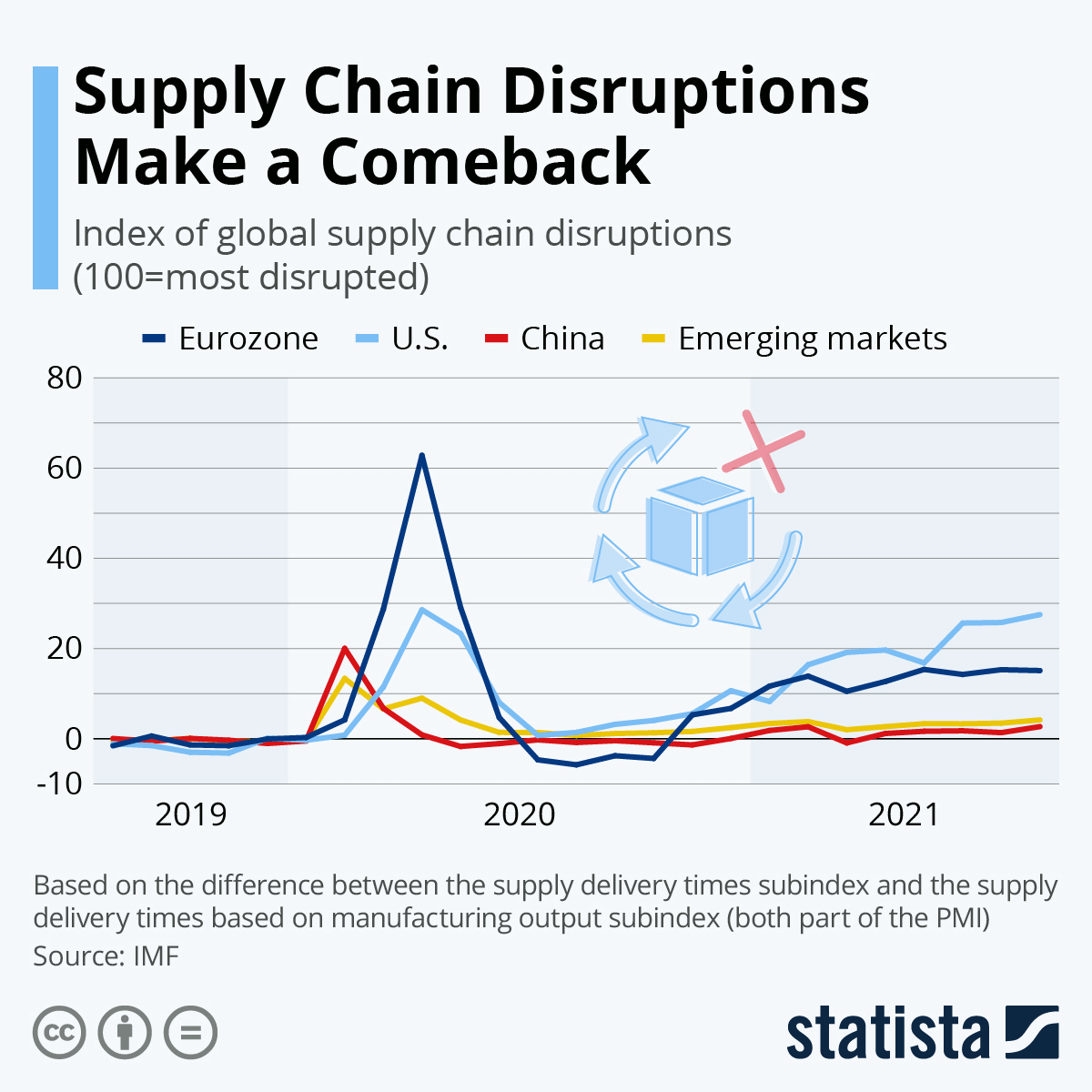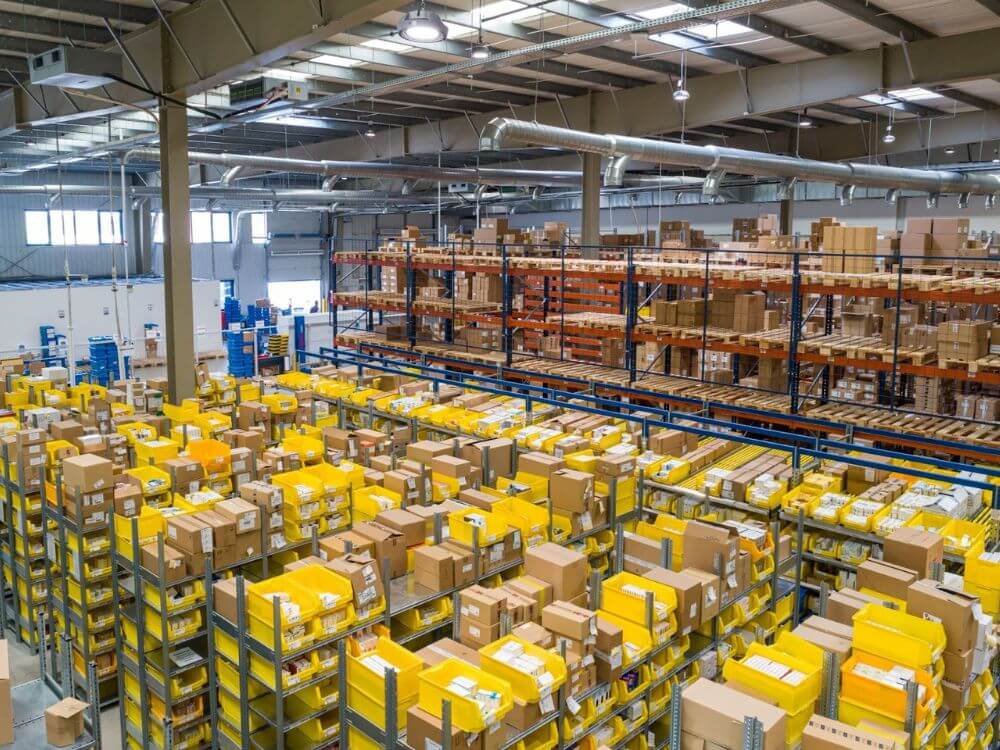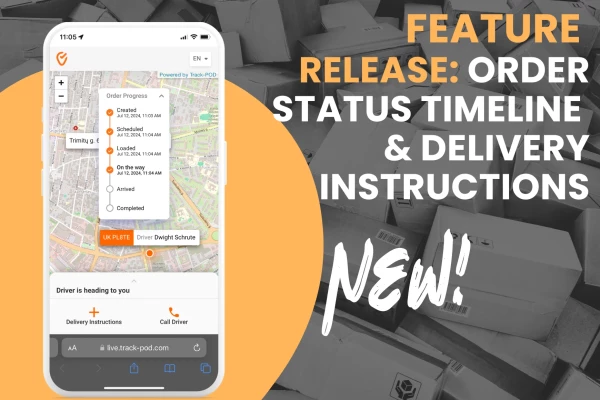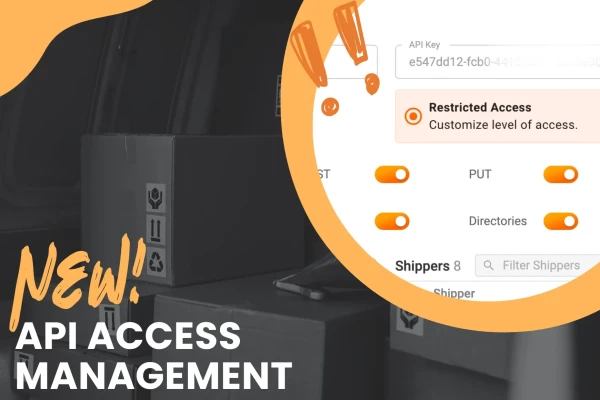Mitigate Supply Chain Disruptions With These 8 Expert Tips

by
Tanhaz Kamaly
June 27, 2022
In this post, guest writer Tanhaz Kamaly shares 8 expert tips on navigating supply chain disruptions.
What makes a successful business? This is a question that all businesses ponder, but their answers vary.
Some organizations focus on improving customer support by investing in a virtual contact centre, others focus on building products to better meet consumer needs. But what all businesses agree on is that a successful business needs a steady supply of products.
However, though this sounds obvious, many businesses struggle to get items delivered on time. As a consumer, you will probably have felt this frustration before. There’s a product that you want to buy, but it is out of stock. Or perhaps you have ordered a product, but it’s taken an unreasonable amount of time to arrive.
Why do these delays occur? Because a business has not properly prepared its supply chain for disruption.
Make no mistake, supply chain disruptions can cause real damage. In fact, 75% of companies say that disruptions have negative or strongly negative impacts on their businesses.
If your business has run into delays, you might be unsure of what to do next. This is where this article comes in handy. Want some solutions to common supply chain disruptions? Read on.
Firstly… What is a supply chain disruption?

Think about all the people and processes involved in getting a product to a customer. You’ll need supplies to build products, manufacturers to put items together, and people to deliver them once they are sold. This is a supply chain.
Think of this as an engine. For it to run, you need multiple components working in tandem. If any one of these parts is removed, the engine will stop running. Similarly, if any part of a supply chain is disrupted, it will delay the customer from getting their product.
To put this into perspective, let’s imagine that you are selling furniture. To begin, you’ll need materials such as wood and fabrics. Once these have arrived, you can start to assemble products and have them delivered to customers.
But what if an event, such as a forest fire, stopped you from getting the materials you needed on time? You could order wood from a different supplier, but this still causes some delays.
It's not hard to see how disruptions can be troublesome for business. Let’s look at some ways to mitigate these issues.
1. Start with a plan

It’s no use panicking when a disruption does occur. Instead, it’s far better to have solutions on hand. However, planning shouldn’t be a rushed process. Instead, you need to consider all potential eventualities, even those that are unlikely to happen.
Here are some examples of causes for supply chain disruptions.
- Natural disasters.
- Cyberattacks.
- Issues with transportation.
- Increasing fuel costs.
So, what can you do? First things first, you should look at your supply chain as a whole. What are the weakest links in the chain?
Once you’ve identified a potential disruption, start to assess the effects that it could have. Are there measures you can put in place to minimize risk (e.g., installing flood protection in your warehouse)?
It might also be a good idea to create an emergency budget that you can tap into during times of delay. Additionally, there’s no harm in stockpiling some resources so that you have materials to work with in the event of a disruption.
2. Choose the right supplier
Without materials, you can’t manufacture any products. That’s why choosing the right supplier is so important. If your supplier isn’t properly prepared for disruption, you could find yourself cut off from the materials you need.
There’s nothing you can do about a natural disaster, nor are you likely to have any warning when a disaster does strike. But make sure you choose a manufacturer who has considered the impact of disaster before it happens.
For example, are you getting supplies from an area that is liable to flood? If so, make sure that your supply has a contingency plan in place. If not, it might be better to go elsewhere. It’s also in your interest to identify a backup supplier that can deliver in the event of a disaster.
Start building supplier relationships with backups now. The better rapport you have, the more likely they are to be helpful should you run into trouble.
3. Your supply chain is more complicated than you think

It’s essential that you can plug into your supply chain and have a clear view of all processes. This means looking at each individual point in your supply chain, can you access information about them easily? Even if you think the answer is ‘yes’, you might want to double-check.
Your supply chain is bigger than you think.
Your list of pain points shouldn’t just include your suppliers. If you are getting supplies from an external source, who are their suppliers? The clarity of your view over every point of your supply chain is known as supply chain visibility.
Let’s imagine that you get HR services from a third party. In effect, you will then be reliant on that company's supply chain. For example, they might use IT or communications services from their own suppliers and might use agency staff. Do you have visibility of these factors, and can you assess the risks associated with them?
If not, you don’t have full visibility of your supply chain, and can’t properly access or manage the risks.
4. Diversify your supply
Where are you getting your supplies from? If you’re relying on shipments from one specific place, you could be in trouble. If any disruptions occur in that specific area, you will be cut off from your supplies.
For instance, imagine a business that is based in Manchester and receives all its supplies from Birmingham. Large-scale traffic disruptions mean that supplies are severely disrupted, and the company must halt the production of its products. No new items can be bought, and products that have already been ordered won’t arrive on time.
In this scenario, customers will be disappointed, and you’ll be prevented from making new sales. But how could this have been prevented?
Instead of seeking supplies from one specific area, diversify. Choose suppliers from multiple locations, that way you will be less affected by disruptions.
It’s a good idea to carry out plenty of research before choosing a supplier. A phone call is always important to make sure that you are on the same page and receive the necessary information. To this end, a small business cloud phone system can help you to have smoother, higher-quality calls.
5. Invest in better software

Supply chain planning and management have always been managed by humans. Due to this, there have often been errors that have damaged the efficiency of businesses. The fact is that even the most experienced employees make mistakes sometimes. These can be costly; one small error could derail your entire operation.
Technology has changed a lot over the last 30 years. One of the prominent technologies to emerge is AI-powered machine learning. This system uses algorithms to replicate human thought patterns, enabling it to make more intelligent decisions.
There are many different examples of machine learning (i.e., convolutional neural network vs deep learning). The technology has huge potential to improve processes in organizations of all shapes and sizes. Supply chain management is one of the ways in which this technology can be applied.
Machine learning can reinvent processes in your supply chain. This reduces the chance of error and ensures that your supply is efficient as possible.
You could even bring in a transportation management system to supercharge your deliveries.
6. Review risks
Risk isn’t static, and new risks will arise over time. If your risk management is to be effective, it needs to be up to date. Don’t assume that once you’ve carried out your first risk assessment, you won’t have to carry out any further reviews.
Risks change over time. Not long ago, most people wouldn’t think a cyber-attack was a particularly likely occurrence. But recent studies show that 66% of small to medium-sized businesses have been affected by a cyber-attack in the past 12 months. Cyberattacks targeting a business's supply chain security infrastructure can seriously compromise their inventory's safety, highlighting the need for robust commercial security systems to mitigate risks. Similarly, the climate is becoming an ever-increasing issue for transport.
New and unprecedented threats will affect your supply chain. If you aren’t prepared, you will end up bearing the brunt. So, don’t be idle.
Risk assessments should be carried out regularly—at least once a year, or each time you change suppliers. If new threats arise, make sure you have a strategy in place to mitigate risks.
7. Carry out risk training

Having a plan in place is a great first step. But to be effective, the wider culture of your businesses should become risk-aware. You’ve probably heard the term business culture before. It’s becoming an increasingly important topic for organizations. A culture should embody your beliefs and general approach and be present in your employees.
A risk-aware culture means that by default, your employees will consider risks in their day-to-day work lives.
With the right culture in place, your entire organization will be actively working to minimize risks. This means that your supply chain will be more effective, and risks will have been considered in each process.
But how do you go about crafting a risk-aware culture? The easiest step is to introduce risk assessment training into your organization. This will help your employees to better identify and resolve risks as they come up and covers important topics such as cybersecurity.
Many businesses don’t like the idea of training—it can be costly and resource-heavy. Most businesses would rather put money elsewhere, such as creating a more discoverable website through buy domain name nz.
But if you want a risk-aware business, there can be no cutting corners.
8. Prepare for cyberattacks
As we have already noted, the kind of threats facing supply chains are changing. Cybercriminals are gaining more and more advanced tactics.
Many organizations are turning to automation to improve the efficiency of their businesses. This ranges from the use of affiliate marketing tools to improving inventory management in supply chains. However, introducing more technology leaves the door open to attacks.
Due to this, hackers are now targeting supply chains with the aim of causing disruption. Many businesses simply don’t have the protections in place to guard against these attacks.
So, what can you do to protect your business?
The first step is basic, but one that many organizations overlook. Update your anti-virus systems regularly. Hackers are constantly finding new ways to breach systems; an updated anti-virus makes this much more difficult.
It’s also a good idea to set compliance standards for any third-party suppliers you work with. It goes without saying, but you’ll want third parties to work to the same level of security as you, especially if they are handling customer data. Therefore, only hire parties with qualifications like a masters in cyber security online, minimum, to ensure maximum risk assessment and management, alongside data encryption and network protection.
Make sure that you make your compliance standards clear when putting together your proposals. Looking at some formal proposals examples will help give you an idea of how to structure your document.
9. Be prepared to deal with customer complaints
When supply lines are disrupted, it can be extremely frustrating. Customers will feel this frustration too, and they’ll be sure to let you know. During this time, it's important that you take steps to address customers’ concerns, which can easily be done right from your WhatsApp Business Platform.
Show how you are working to address disruptions and get products to customers as soon as possible.
To address customer concerns, you’ll need the best customer support. A hosted contact centre provides a better customer experience and reduces running costs.
Start preparation today!
Ultimately, if you are to build a strong supply chain, you need to start planning today. Disruptions are an ever-present danger, but with the right planning, you can mitigate issues. As we’ve shown here, there are several steps to take. You’ll need to take time finding a supplier and bolster your defenses against new and unprecedented threats.
The alternative is being caught out when disruptions do occur. Your customers will be frustrated and your reputation damaged. If you want to build credibility, disruptions need to be minimal.
When you put the work in, customers will reward you with increased loyalty and cash. Be sure to encourage them to share their satisfaction with others. For example, you should let them know how to rate an app on the app store if your business uses one.
So, what are you waiting for? Disruptions don’t have to be destructive. Start your planning today!
About The Author
Tanhaz Kamaly
Tanhaz Kamaly is a Partnership Executive at Dialpad. He is well-versed and passionate about helping companies work in constantly evolving contexts, anywhere, anytime.










